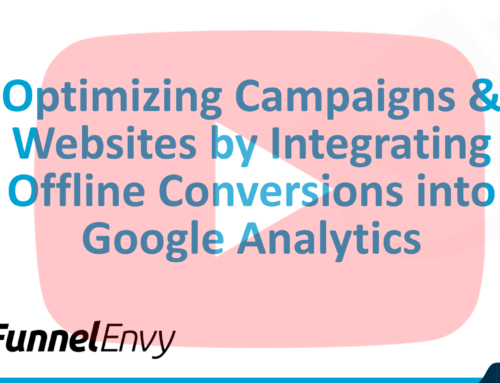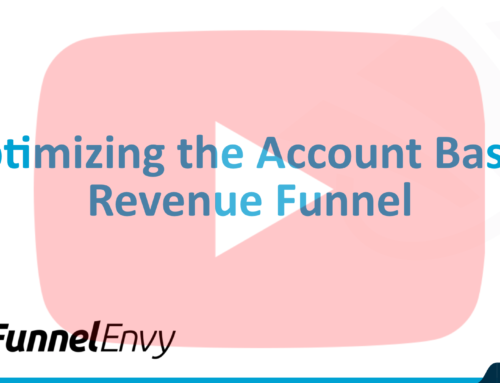Unless you’re selling low-ticket items that cater to impulse buyers, most of your visitors won’t buy from you immediately after visiting your website.
Smart marketers create sales funnels to turn visitors into leads and nurture those leads into buyers. They encourage visitors to join email lists, request price quotes, or schedule product demos. Those initial steps are essential to identify leads and separate them from the rest of your visitors.
But you can’t stop there…
All of the leads in the world aren’t worth a dime unless you can turn a good percentage of them into buyers.
What’s the best way to do this? Most B2B businesses understand the importance of this, but many struggle with execution. But you use data-driven insights to develop your own lead outreach “best practices” and convert more customers.

Photo Credit: eilonwy77 via Compfight cc
Lead Generation is Just the First Step
“Sales” becomes a multi-step process when you’re dealing with expensive, complicated B2B products. As Neil Rackham explains in his excellent book, SPIN Selling, B2B buyers view selling as less of a transaction and more of the beginning of a new relationship. The psychology shifts as price and complexity increases.
A lot of B2B marketers nail the lead generation part, but they struggle when it comes to follow up and conversion. Maybe they rely on instinct or copy what their competitors are doing. But they could use buyers’ behavioral data to streamline their process.
When you’re selling expensive products or services, even the slightest improvement to your lead conversion-process can result in a significant improvement to your business over time.
Use Data-Driven Insights to Strategically Increase Conversions
If you’re still establishing your business, you might not have the requisite traffic or transactions to extrapolate meaningful insights from your data.
Fortunately, Software Advice, a company that helps buyers choose software to meet their specific needs, published a comprehensive Online B2B Buyer Behavior Report. The Software Advice team analyzed the behavior of over 6 million U.S. visitors who visited Software Advice’s commercial landing pages in 2013. The report shares data-driven insights into when B2B buyers perform research, when they convert into customers, and how to best follow up with leads through strategic outreach.
Even if you haven’t collected a lot of data about your own visitors’ behavior yet, you can benefit from Software Advice’s insights.
Key Takeaways from the Software Advice Report
Here are the salient points from the B2B Buyer Behavior Report:
1. Speed Is Everything
Software Advice drove traffic to landing pages. These landing pages encouraged visitors to submit a form providing their telephone number and requesting someone from the Software Advice sales team to contact them.
The data revealed that the chances of “qualifying” a lead (a term used to indicate when a member of the Software Advice sales team performed a telephone needs analysis and BANT qualification) dropped each second they waited before calling the lead.
If the Software Advice sales team called a lead within 5 seconds of receiving their information, they qualified 30% more leads than their average rate.
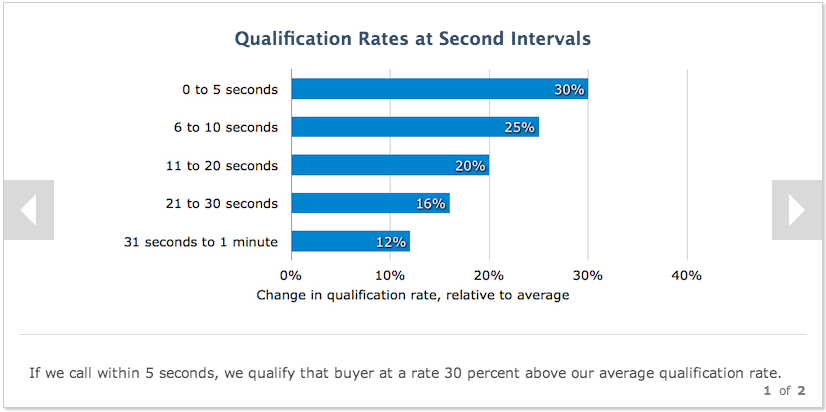
A delay as little as 11 minutes proved costly. These leads qualified 5% less than the average rate, and it only got worse the longer the length of the delay. When you’re selling high-ticket items, this could create a tremendous blow to your business.
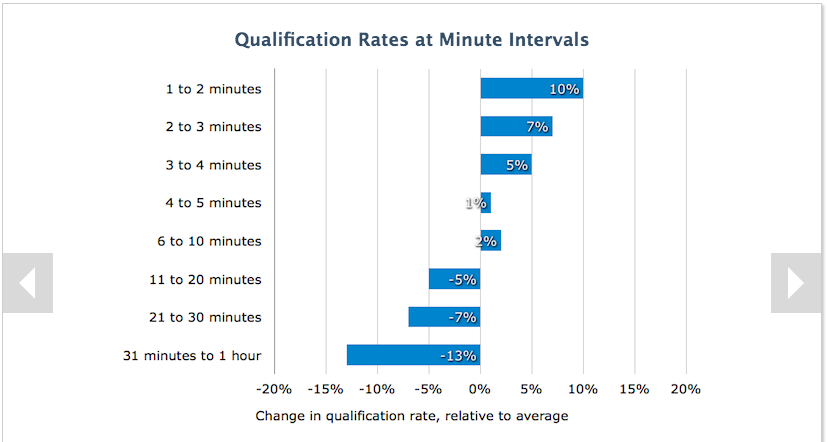
The B2B Buyer Behavior Report distinguished between two types of lead contacts – direct and indirect – and recommended different approaches for each. Direct contact, according to the report, was when a lead requested a price quote, product demo, or more information. In those scenarios, a swift outreach was instrumental.
If your leads are establishing indirect contact with you (this could be something like submitting their email address to download a lead magnet or access other gated content), there’s less need to reach out to them so aggressively.
2. The Middle of the Week Had the Most Buyer Activity
The B2B Buyer Behavior Report also revealed significantly higher traffic levels, conversion rates, and qualification rates in the middle of the week than any other time.
Tuesdays, Wednesdays, and Thursdays were Software Advice’s highest activity days.
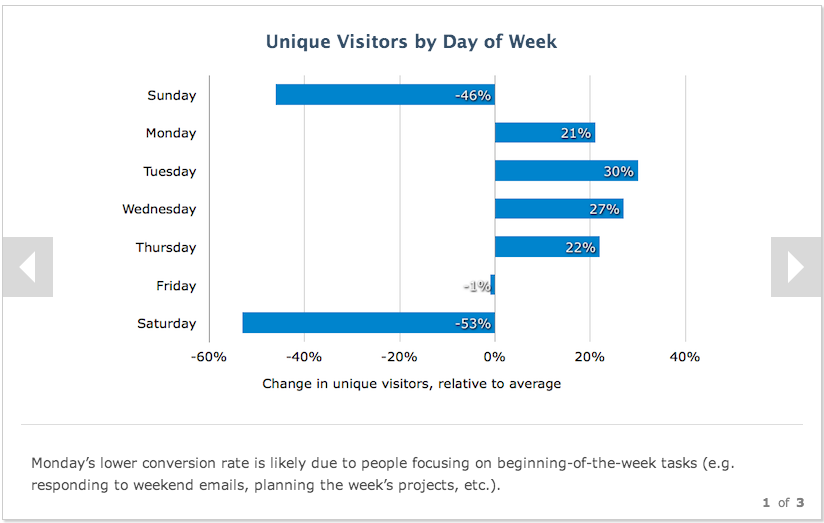
The demands on your sales team will probably fluctuate throughout the week. Recognizing the importance of a speedy follow-up (see insight #1), you’ll have to ensure you have enough resources available for these high-activity days. If a lead submits a form on a Thursday, but your sales team can’t get back to them until Friday, they’re less likely to quality than if you had followed up on Thursday.
Software Advice also recommended scheduling sales team meetings on Mondays and Fridays to account for higher demand in the middle of the week. These two days are also preferable for sales team members to attend conferences, personal appointments, and take time off for vacations.
3. Buying Activity Was Highest During Working Hours (and Peaked at the Lunch Hour)
Software Advice received most of their traffic – 53% more than their average rate – between 8 a.m. and 6 p.m. CST. It wasn’t just traffic that spiked, either. Visitors became more receptive to converting (filling out a form on a landing page) and qualifying between 9 am and 12 pm.
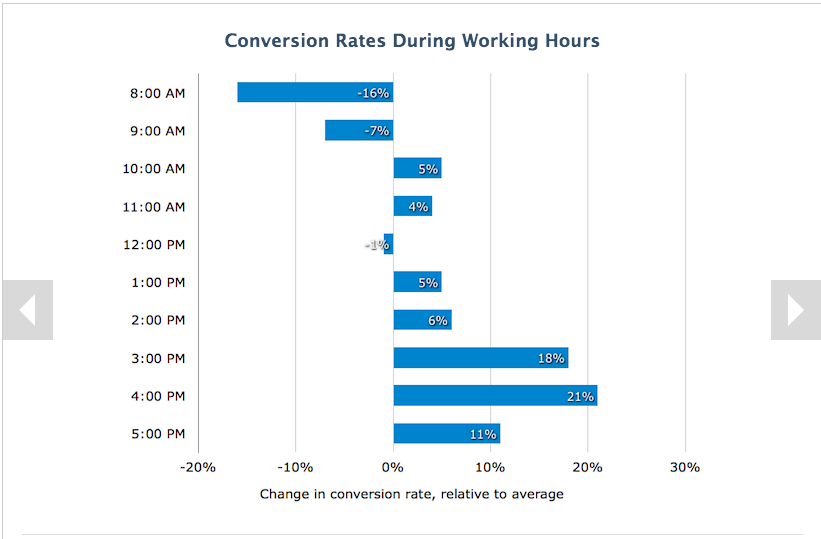
Traffic levels peaked at 12 p.m. Traffic for that hour was almost double the average rate. This suggests that a lot of B2B buyers do research during their lunch hours.
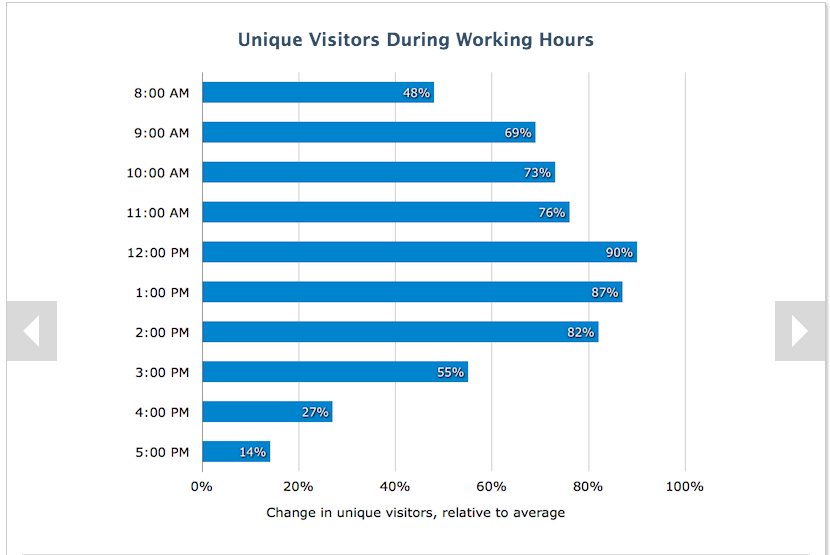
What does this mean to you? Have your sales team at work and ready to go at the beginning of the workday. If you’re on the West Coast, this could mean having sales staff at work as early as 6 a.m. (when most East Coast residents are starting work).
Another key takeaway: make some of your sales team available during the lunch hour, or you risk missing out on the highest-activity time of the day.
Traffic and conversion rates tapered off in the early afternoon and throughout the evening with one exception. Between 9 p.m. and 11:59 p.m. CST, Software Advice’s conversion rates actually increased 13% higher than average.
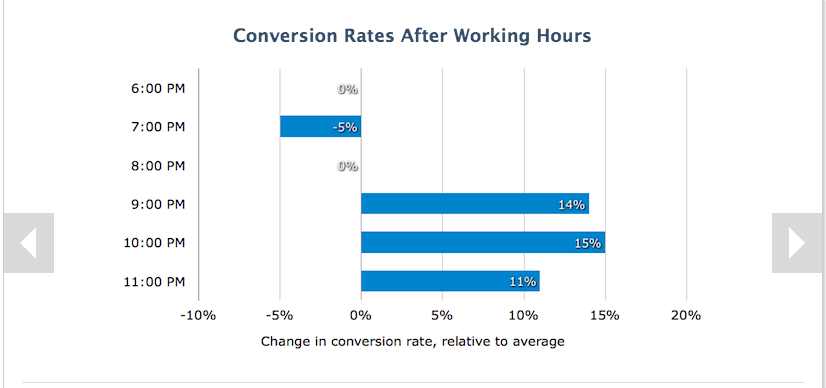
This time window could be a good opportunity to send emails, whitepapers, and other content designed to nurture leads. Your sales team isn’t around, but you can still make the most of that high-converting window.
4. Conversions and Qualifications Were Seasonal
For Software Advice, conversions peaked during the first few months of 2013. The report attributes this to budget renewals and new funds becoming available.
Something interesting happened during the summer months. Fewer leads submitted forms on landing pages than average, but a higher percentage of them were qualified through a follow up phone call with Software Advice’s sales team. This is probably because the sales team had more time and resources available to focus on fewer leads, making for more effective follow up.
These seasonal fluctuations were unique to Software Advice’s business, so they might not apply to you. Ultimately, you’ll have to collect and analyze your own visitor data to spot any seasonal shifts.
5. Holiday Buyer Activity Was Unpredictable
The B2B Buyer Behavior Report also analyzed visitor data around holidays to determine their impact on activity levels and the ideal lead outreach strategy.
The report found that the following holidays (in the U.S. market) were “worth taking off,” as visitor activity and conversions dropped off dramatically:
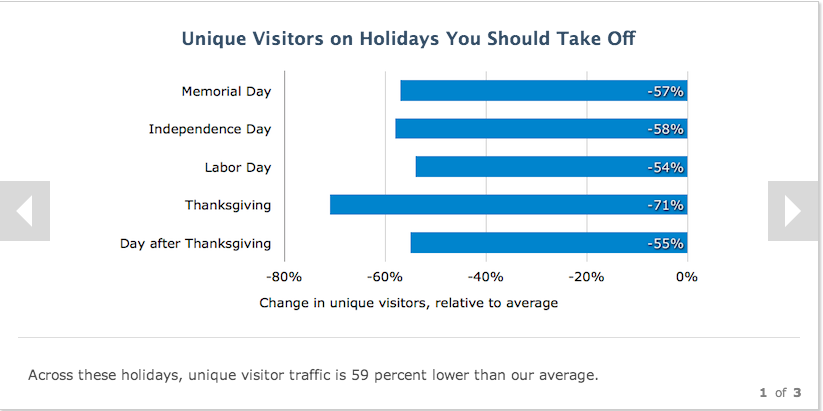
Other holidays experienced less dramatic decreases in activity and conversions. If you have the resources available, consider keeping your sales team (or part of your sales team) in the office on these days:
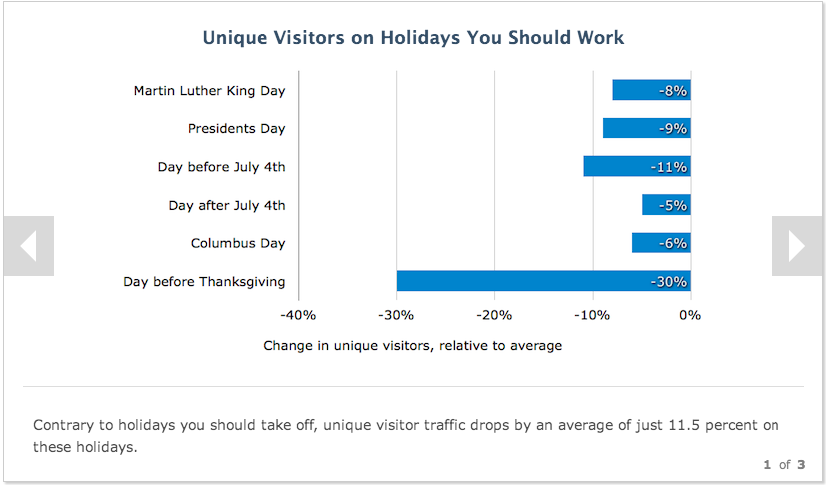
Software Advice also made an interesting discovery about the week before Christmas. They found that, during that week, visitors converted at the same rate as they did on other business days in December. So it would be worth working during that time if you can.
A Lead Outreach Strategy You Can Tweak to Fit Your Business
Creating the best possible lead outreach and conversion strategy is a game of subtle, incremental improvements. It’s this continual optimization, combined with tailoring your website to generate more leads on the front end, that will pay off for months and years to come.
The perfect system for you will depend on what you’re selling and your target market. But you can use the insights from Software Advice’s B2B Buyer Behavior Report as a great jumping off point to establish your own best practices. Then you can tweak your approach over time using data you’ve collected about your own visitors’ behavior.
How do you handle your lead outreach right now? Is there anything you plan to do differently? Leave a comment below and let us know.




